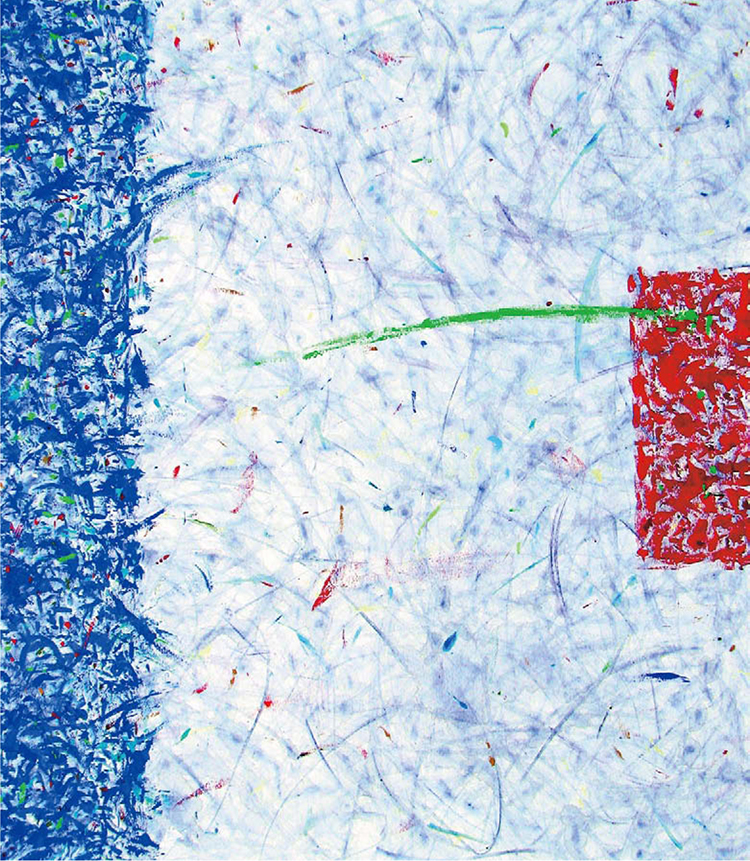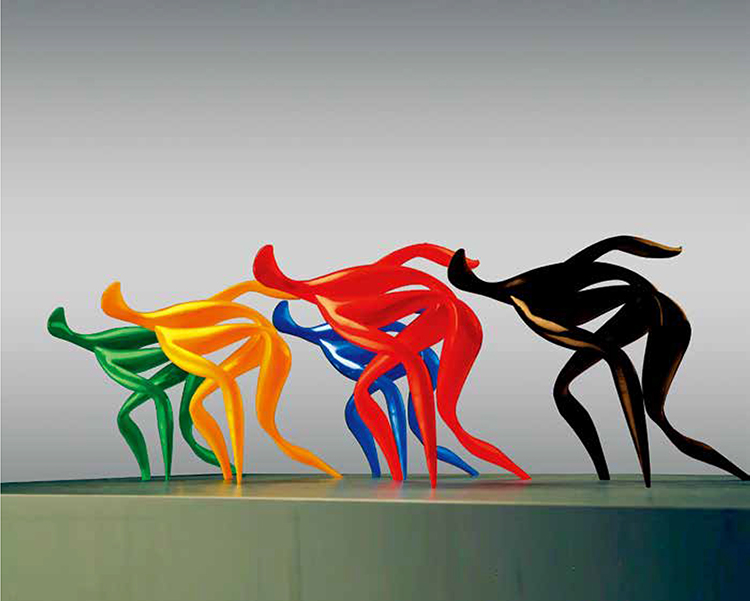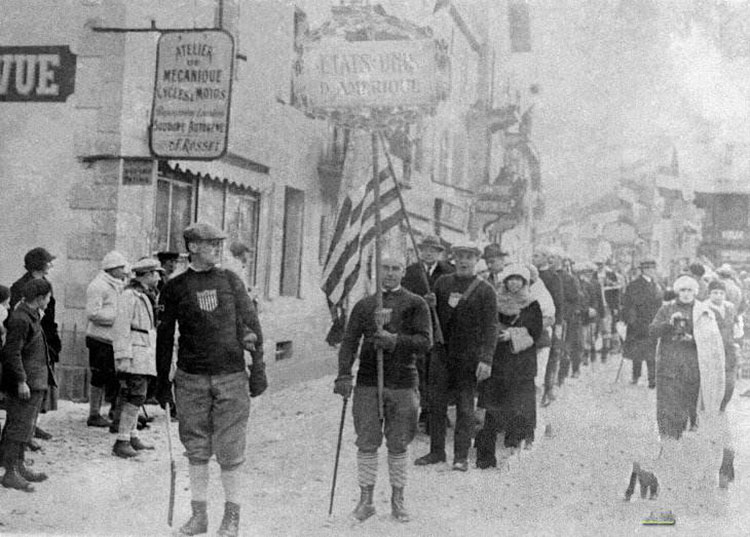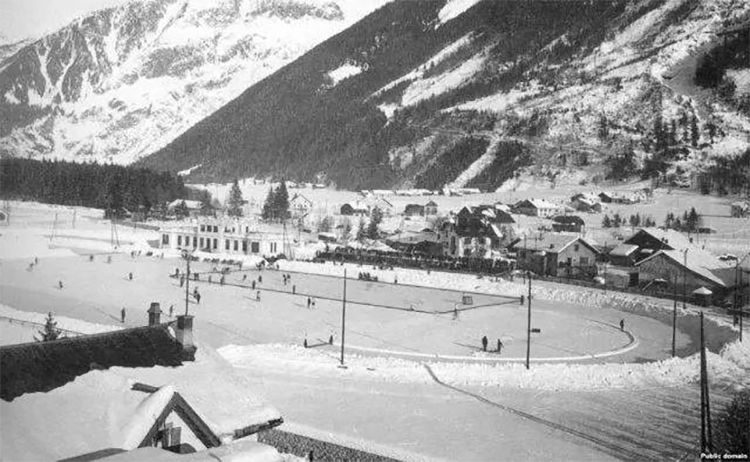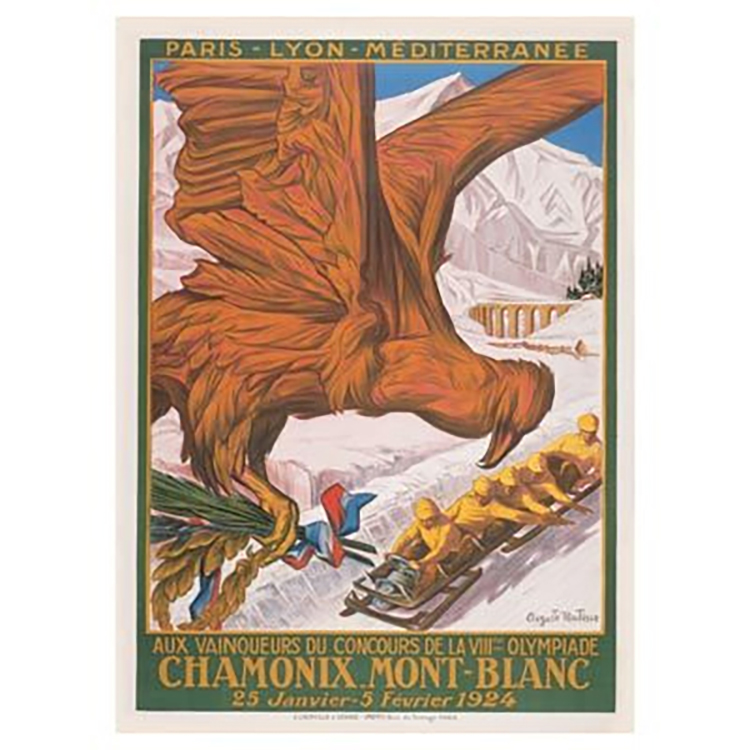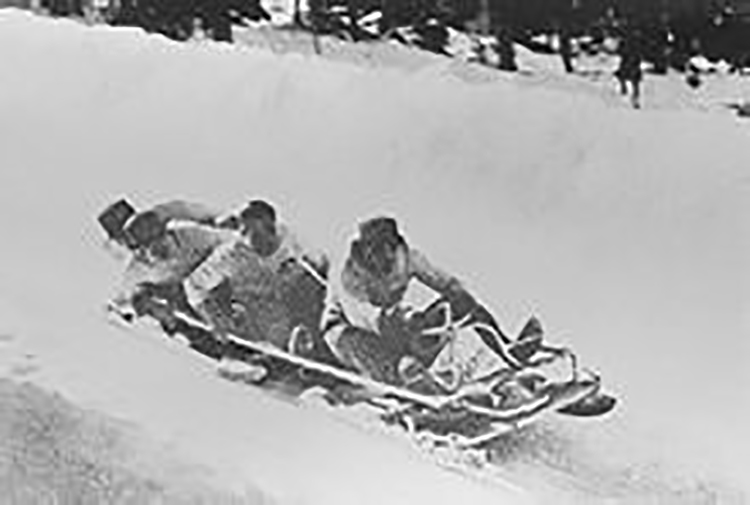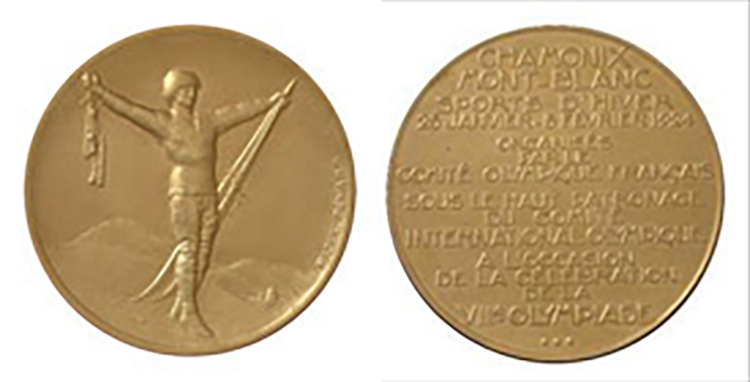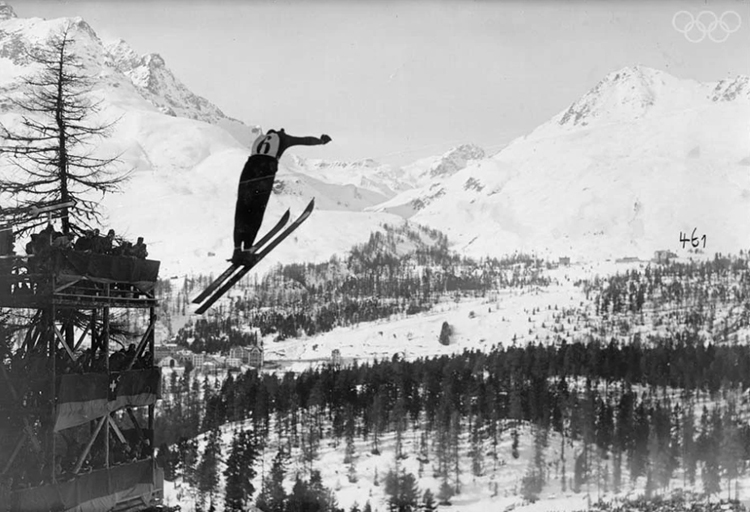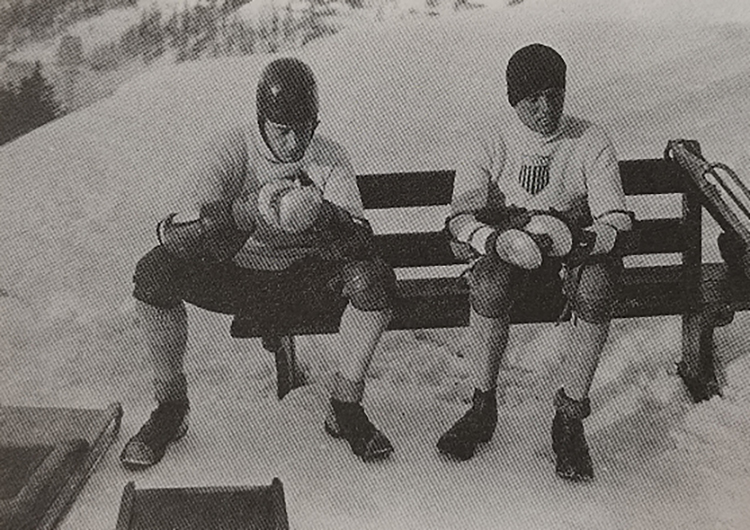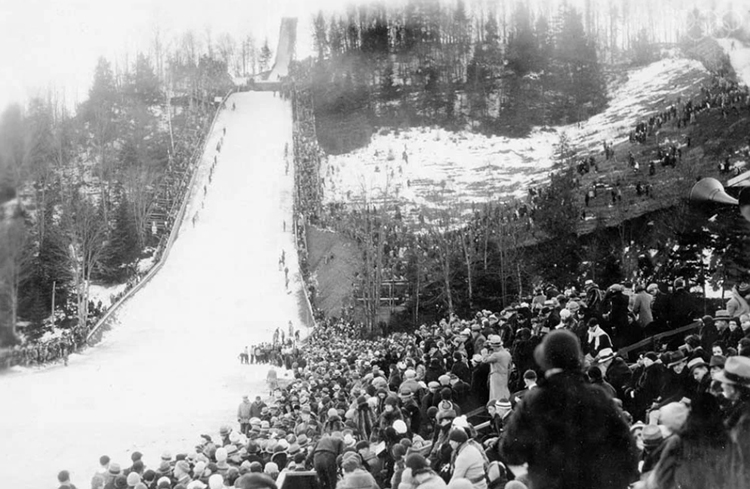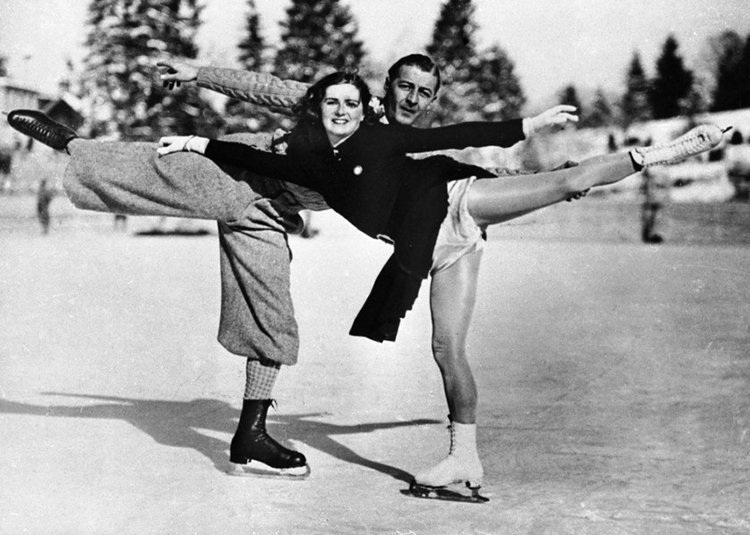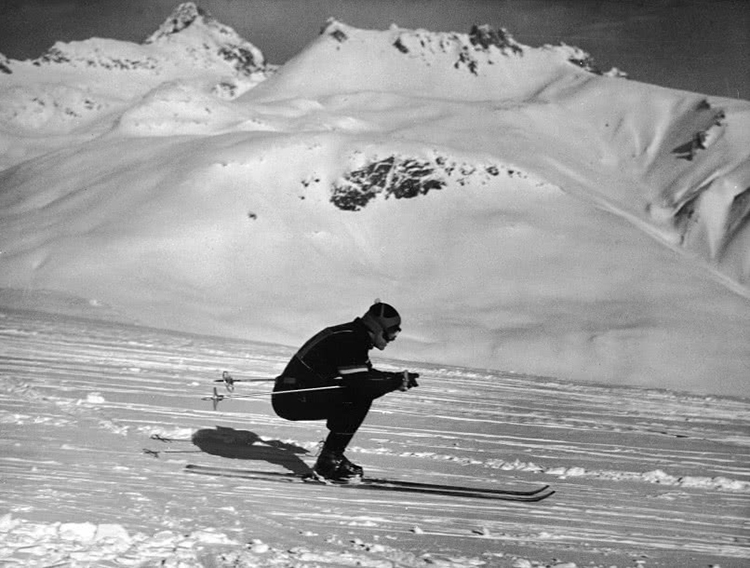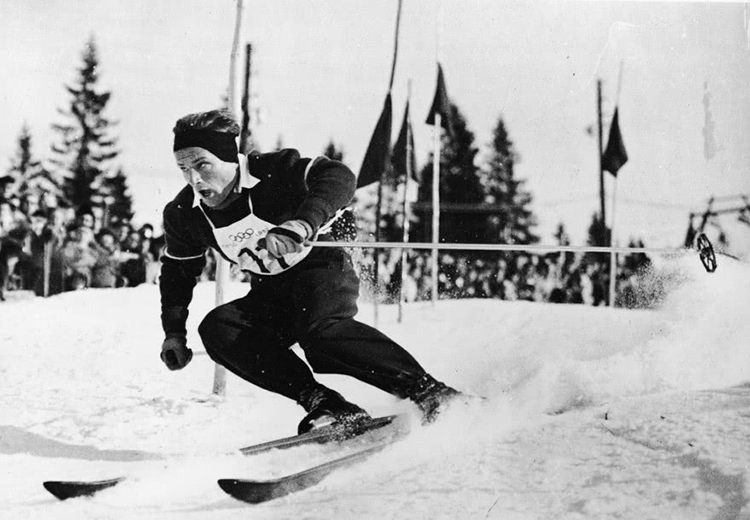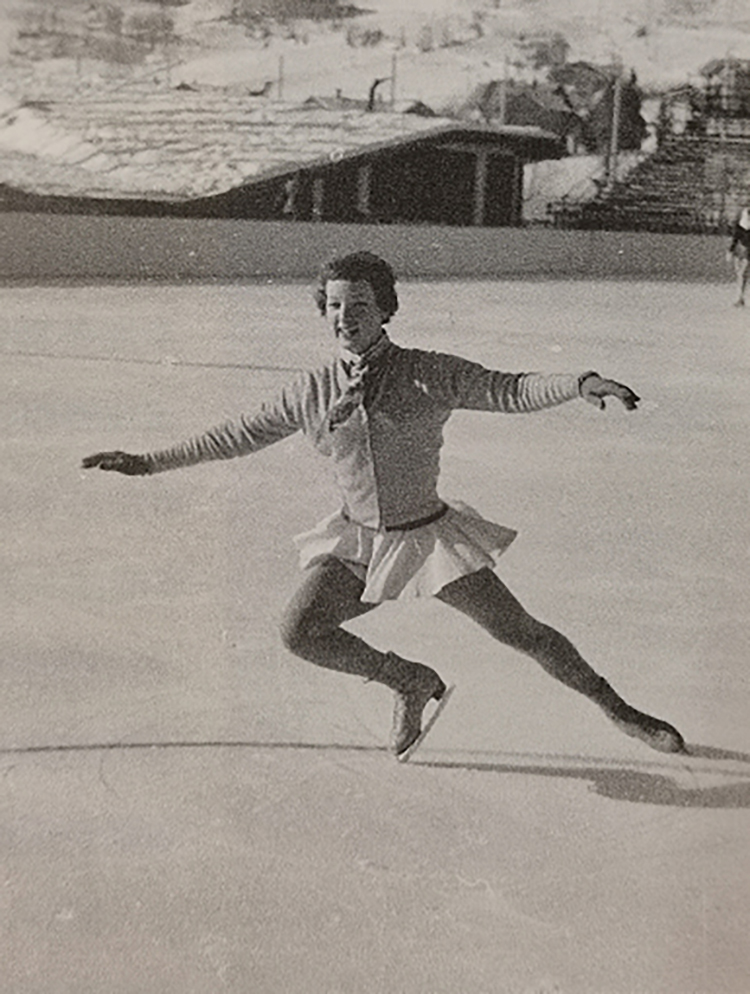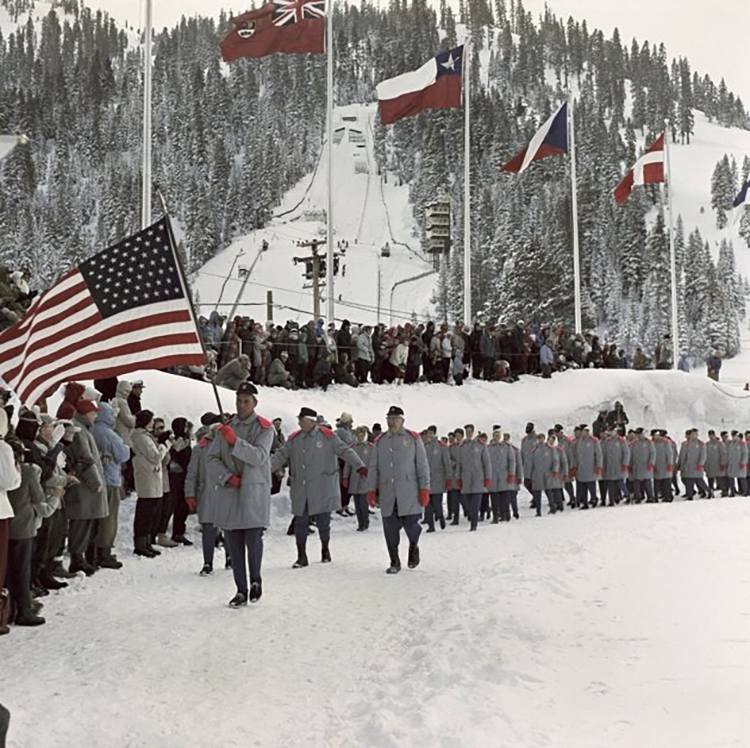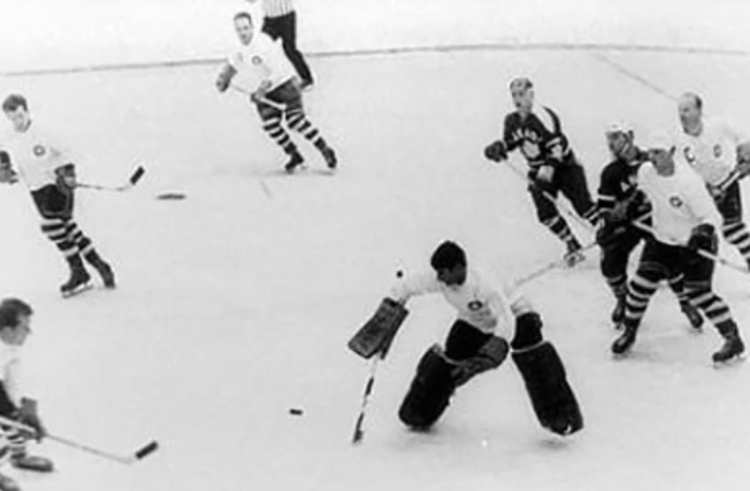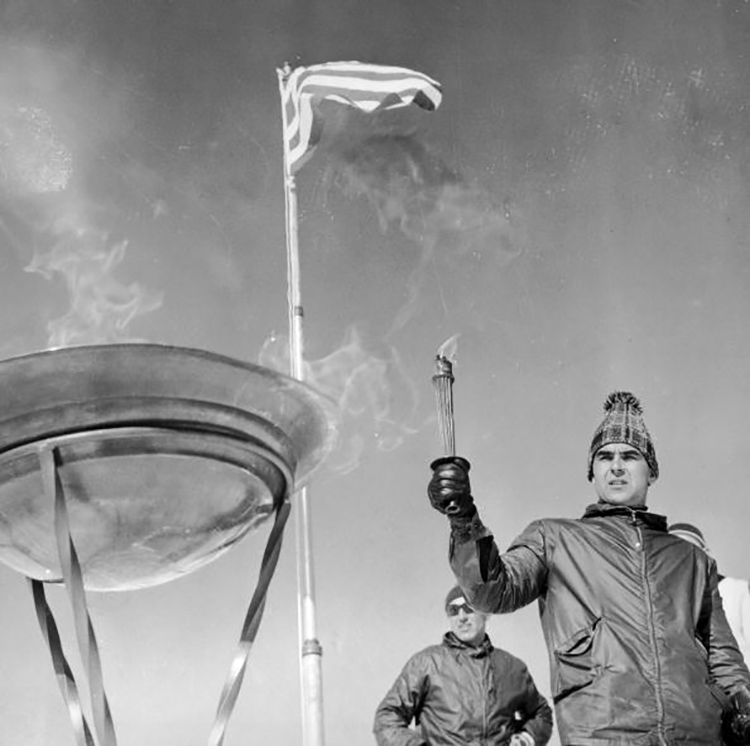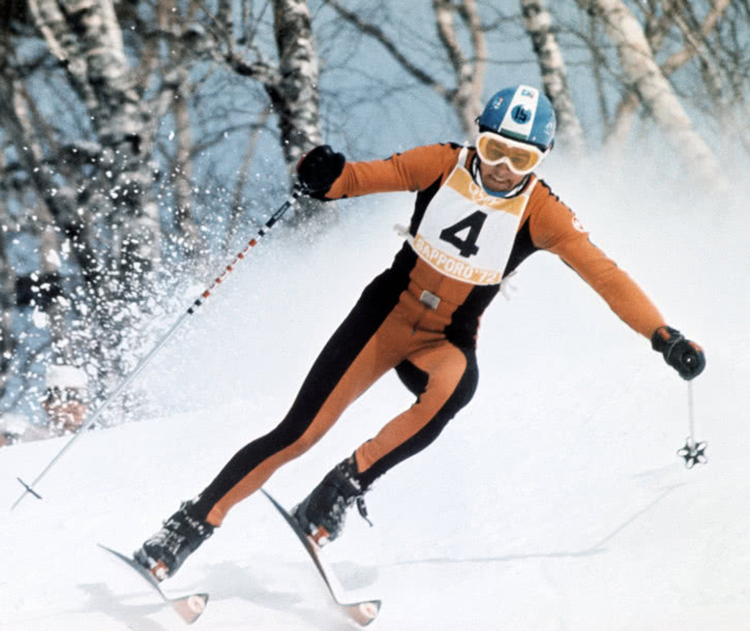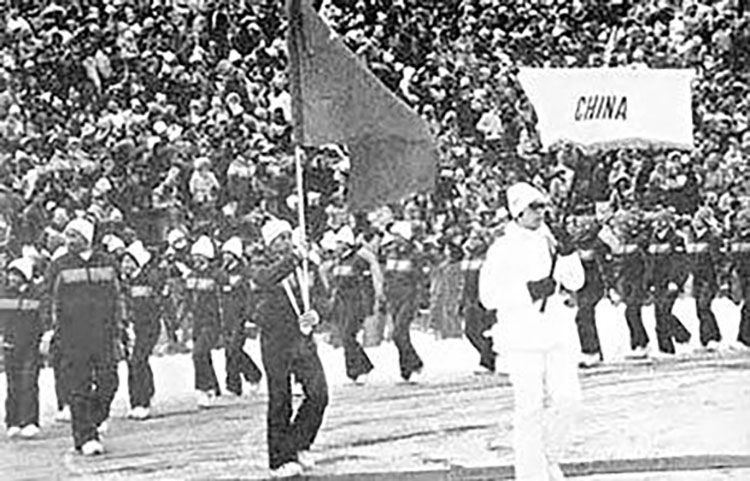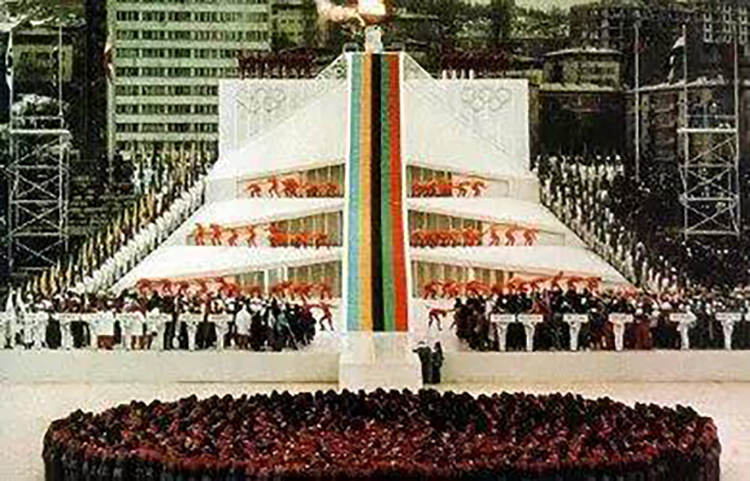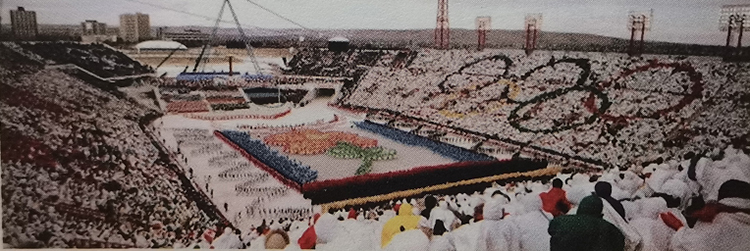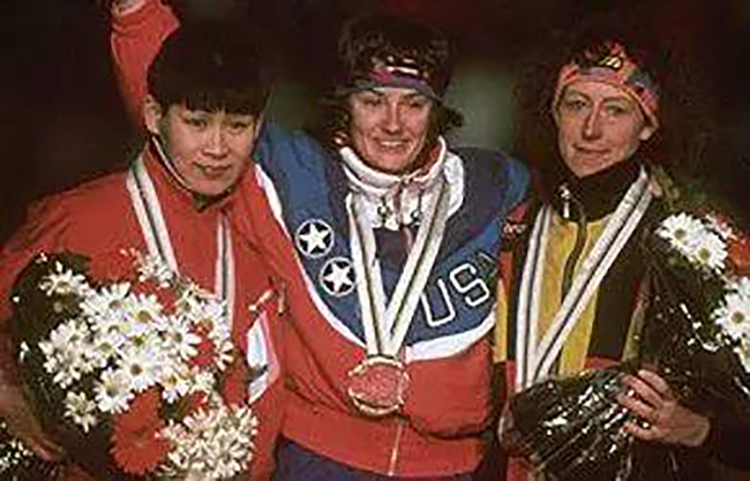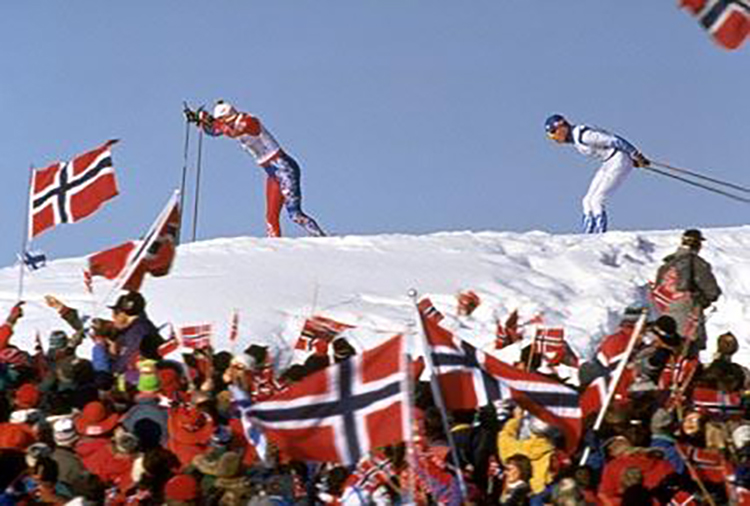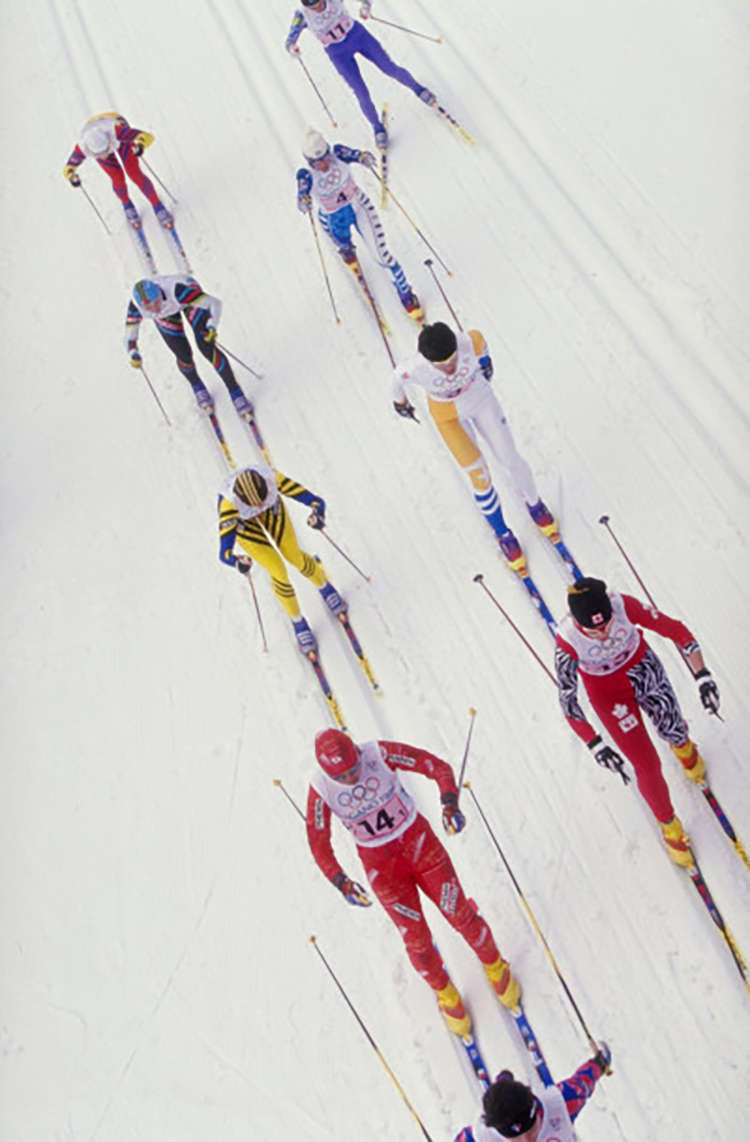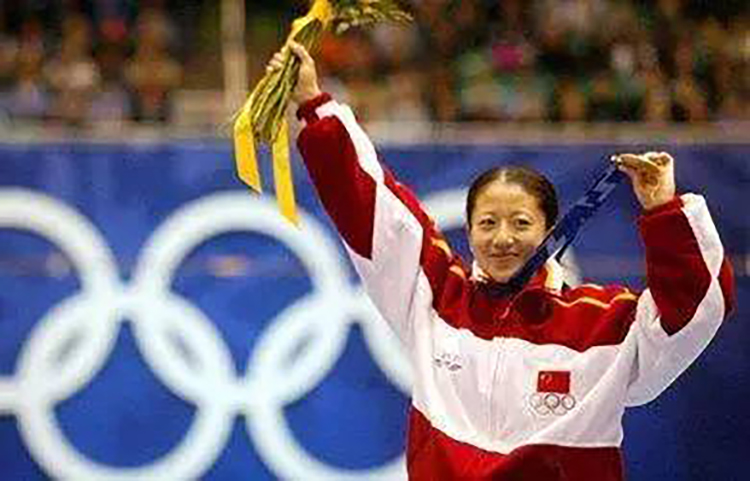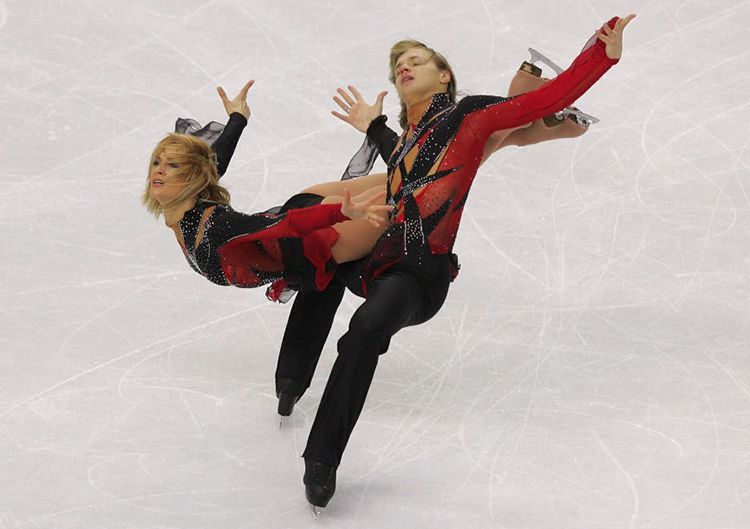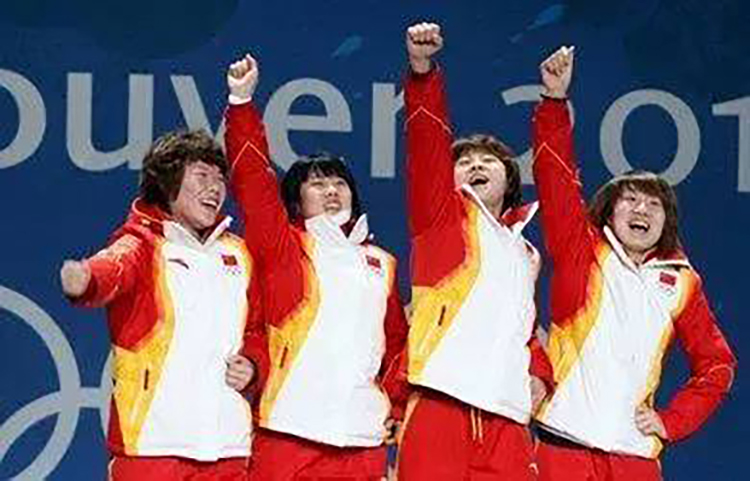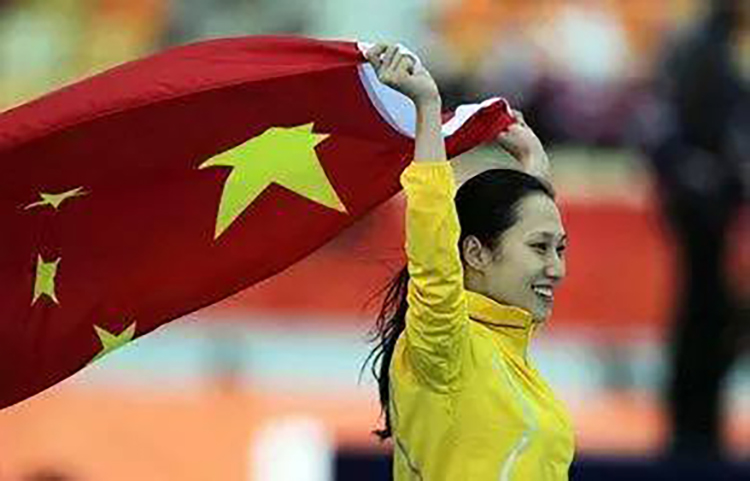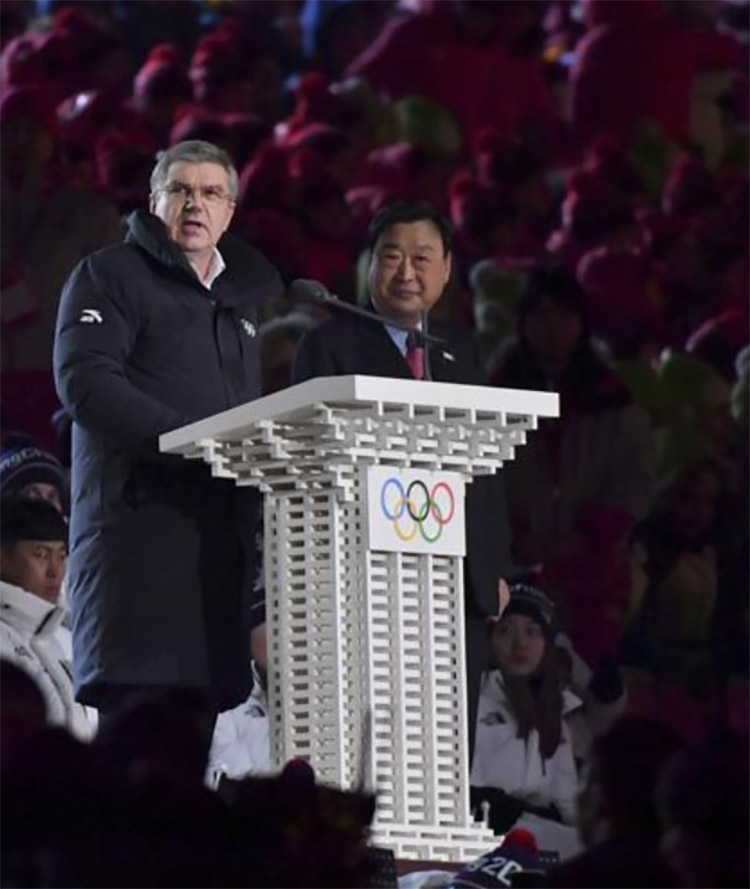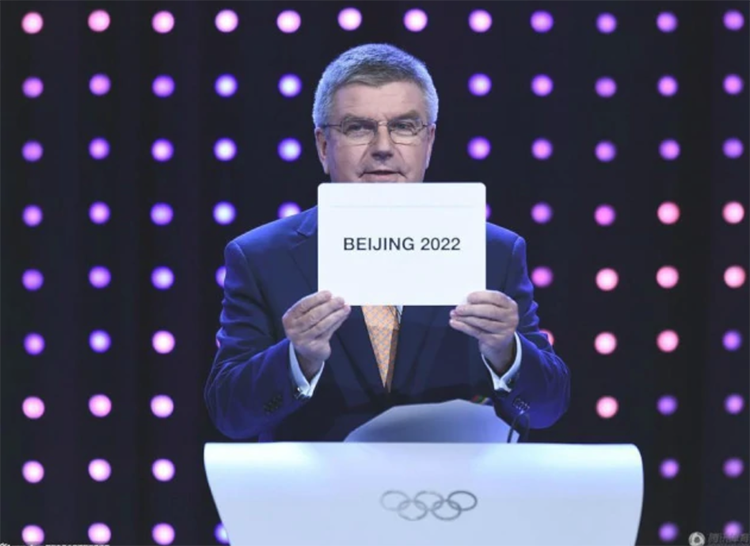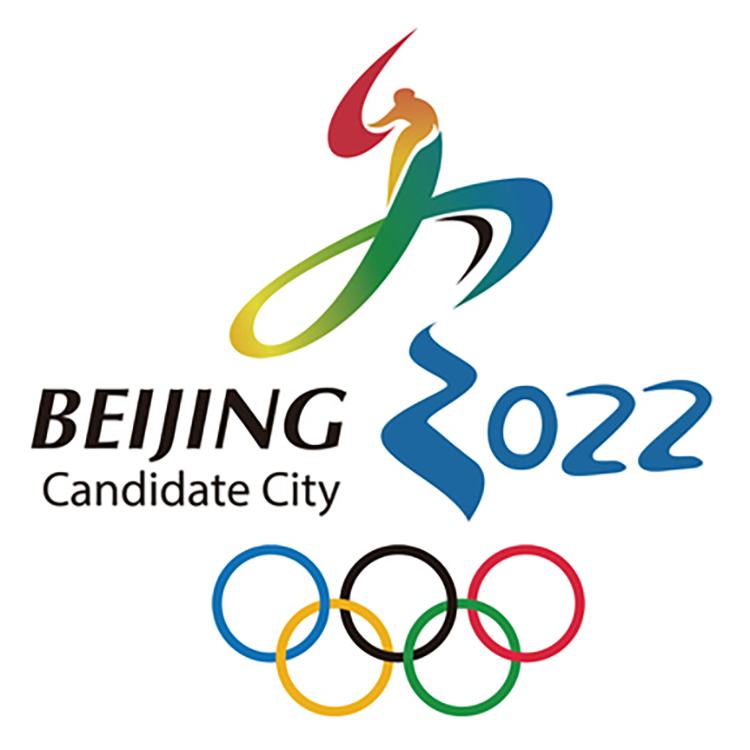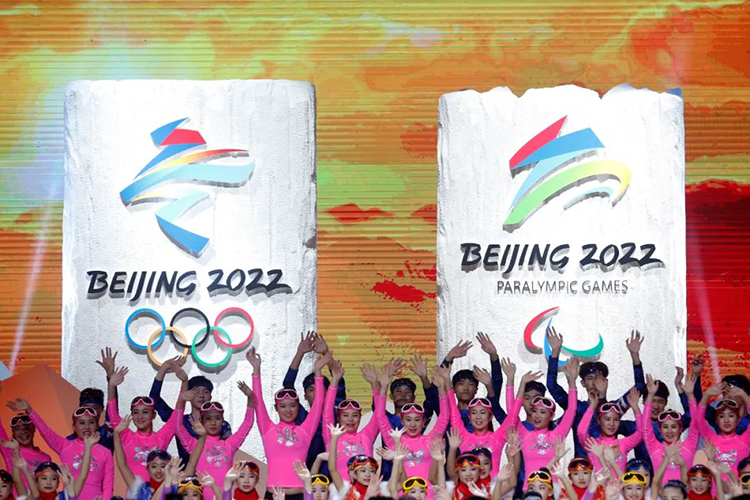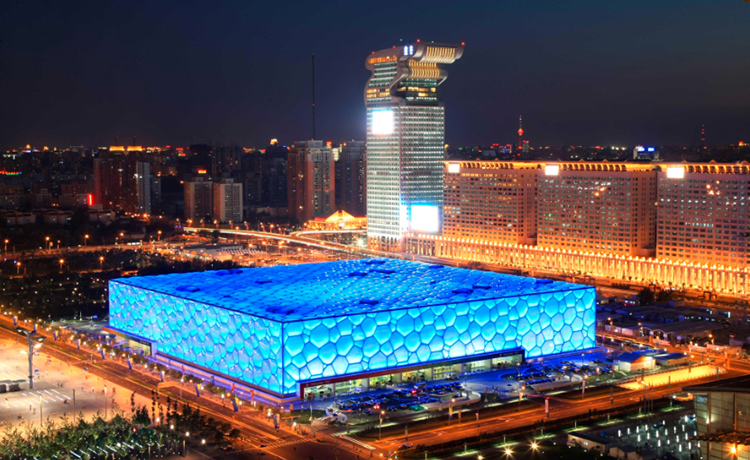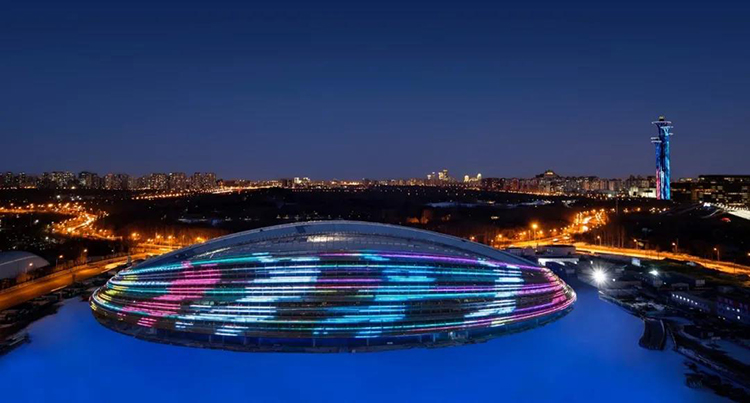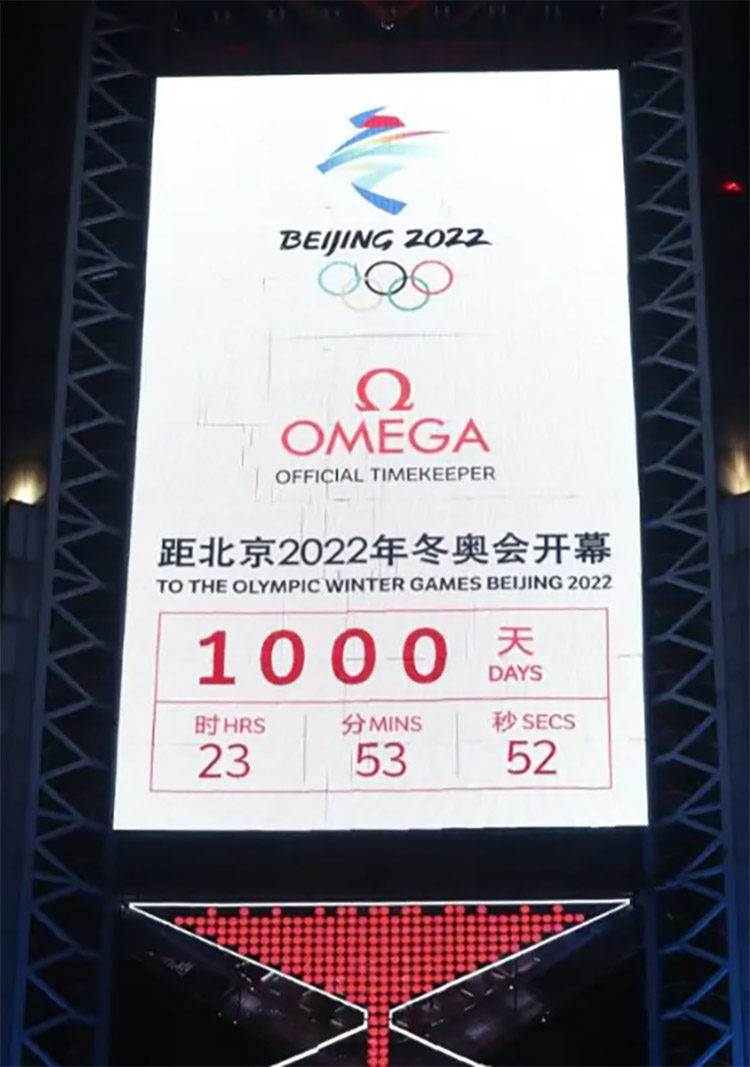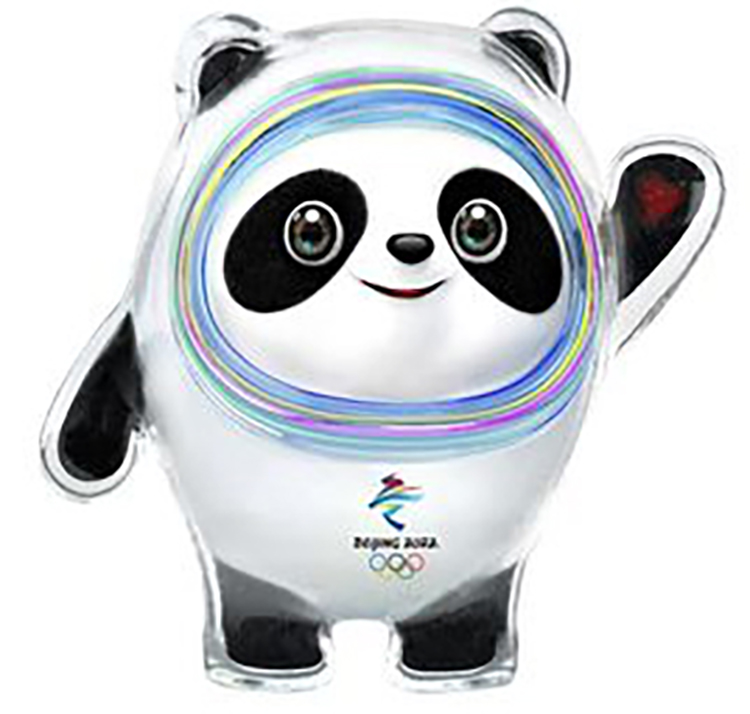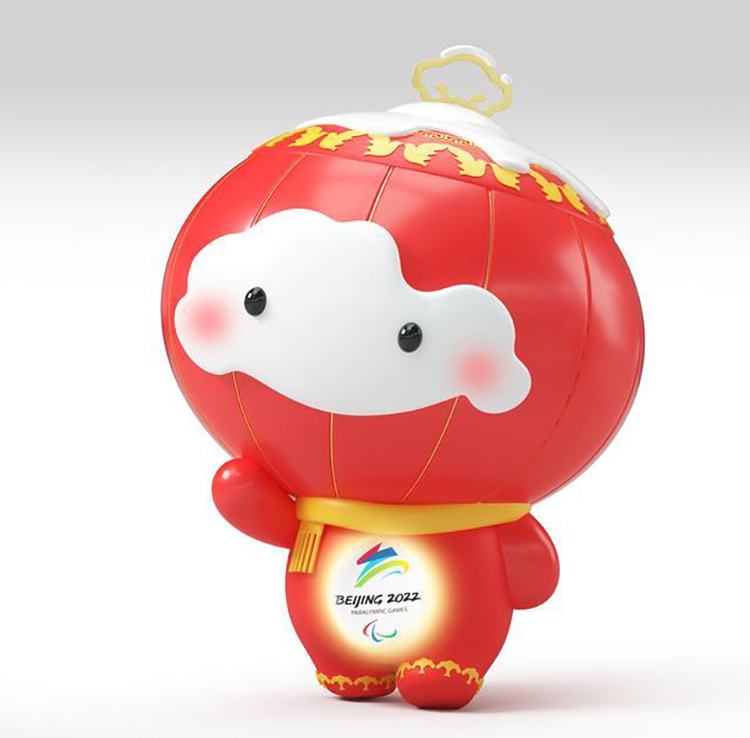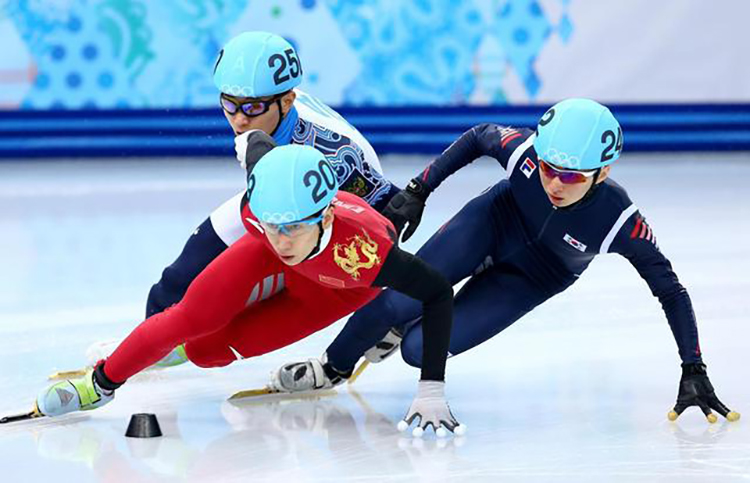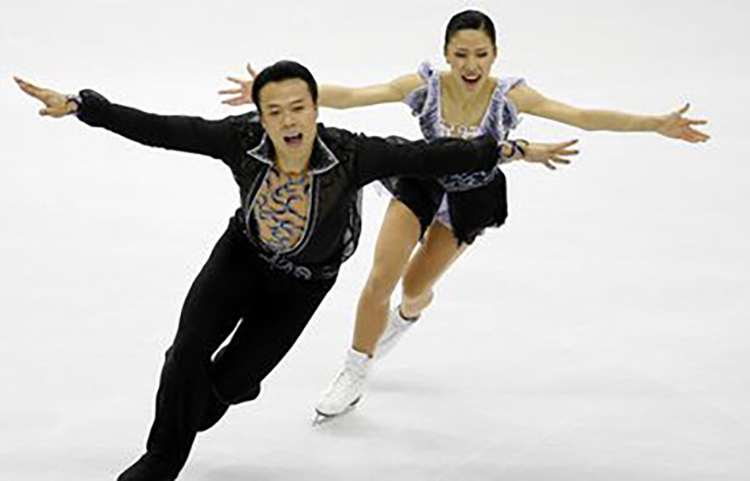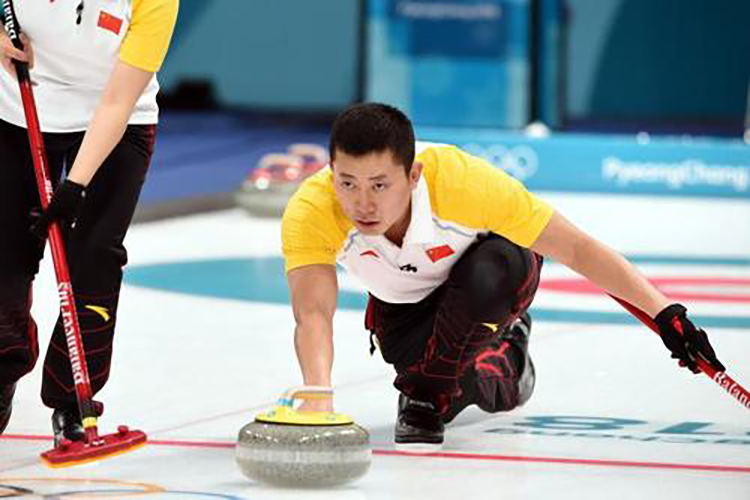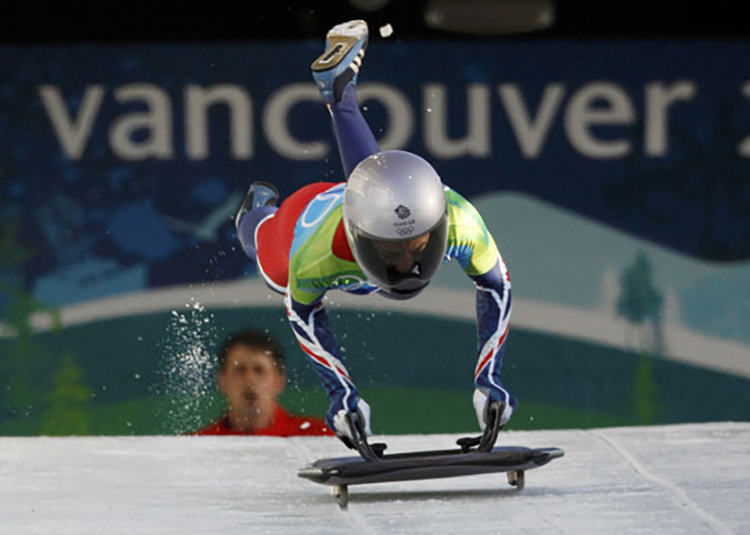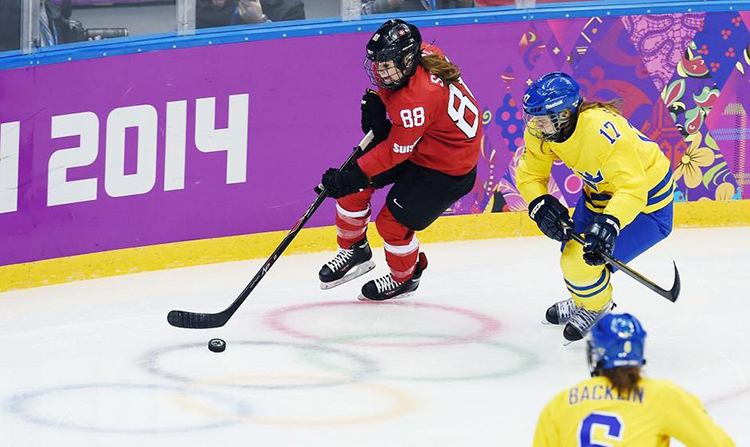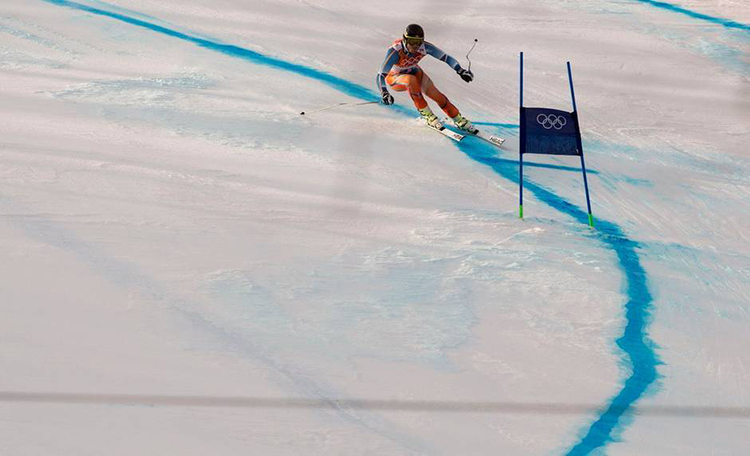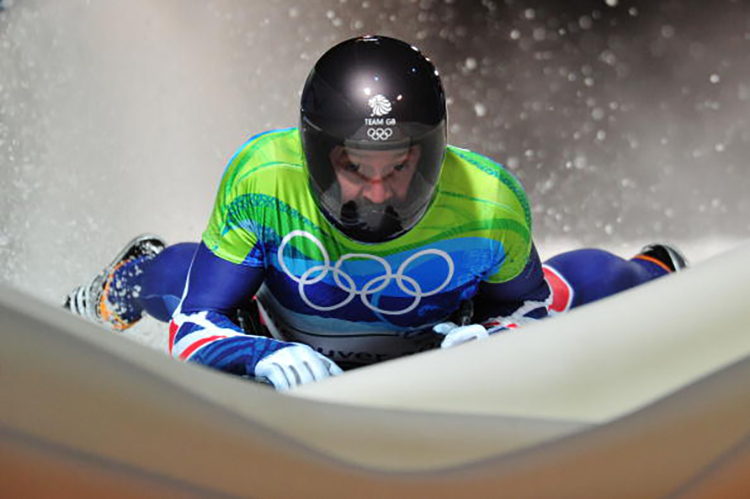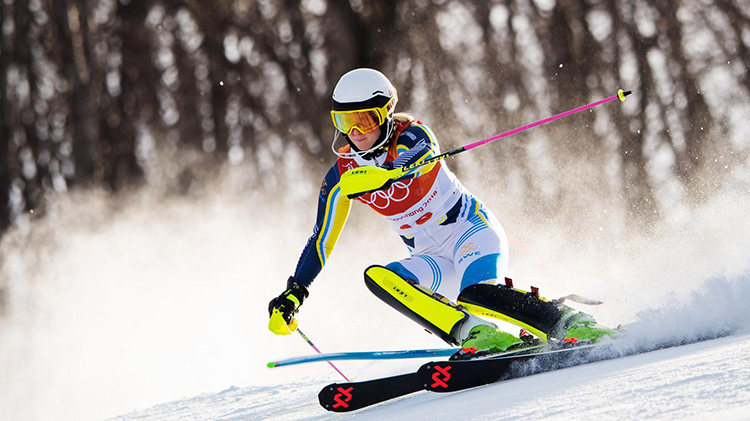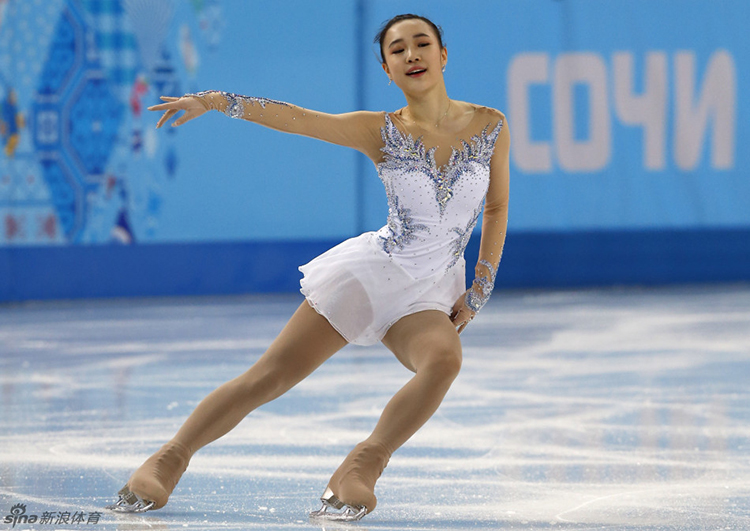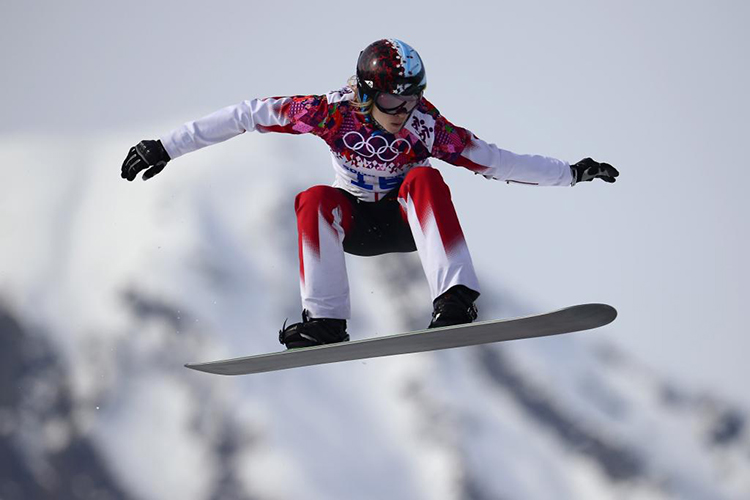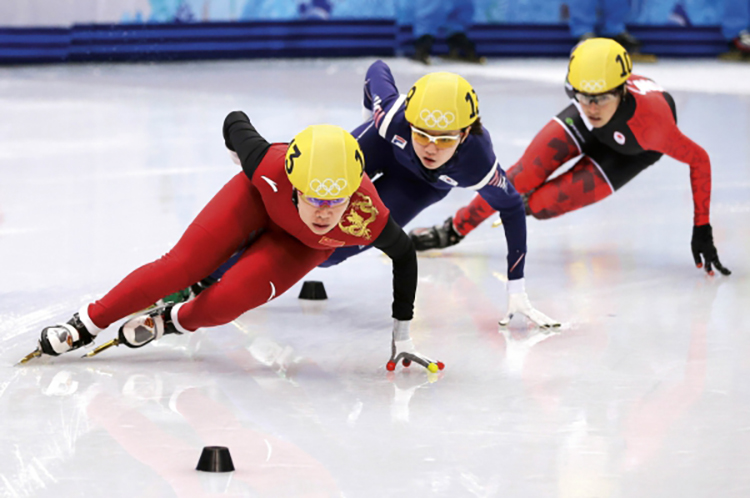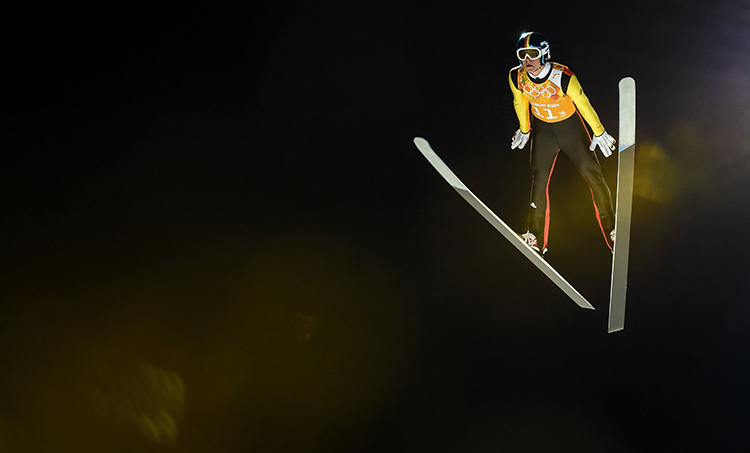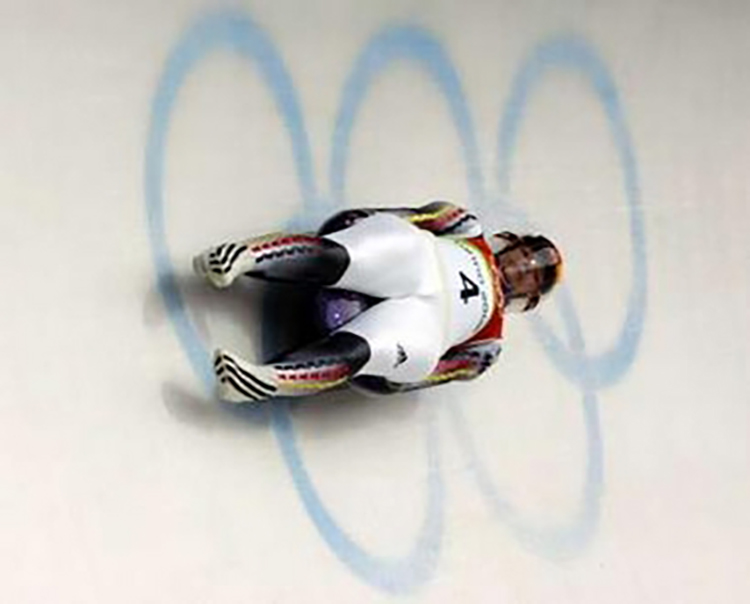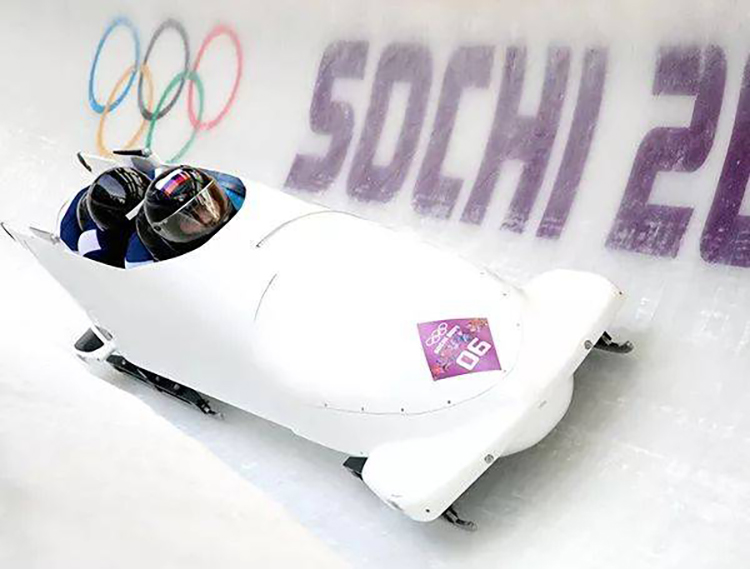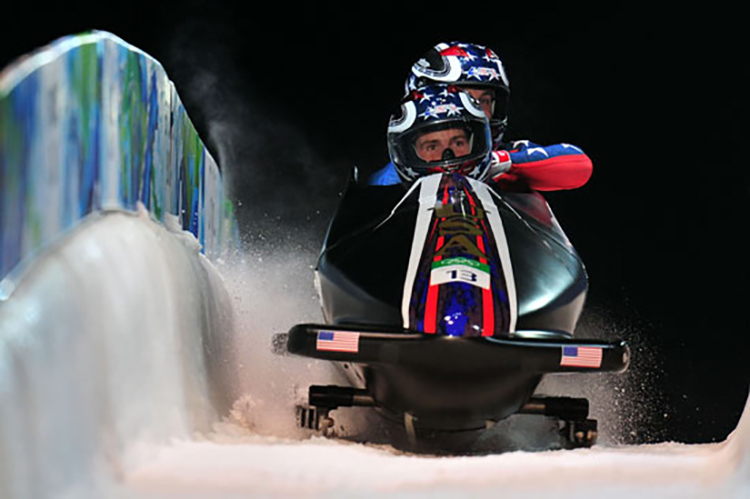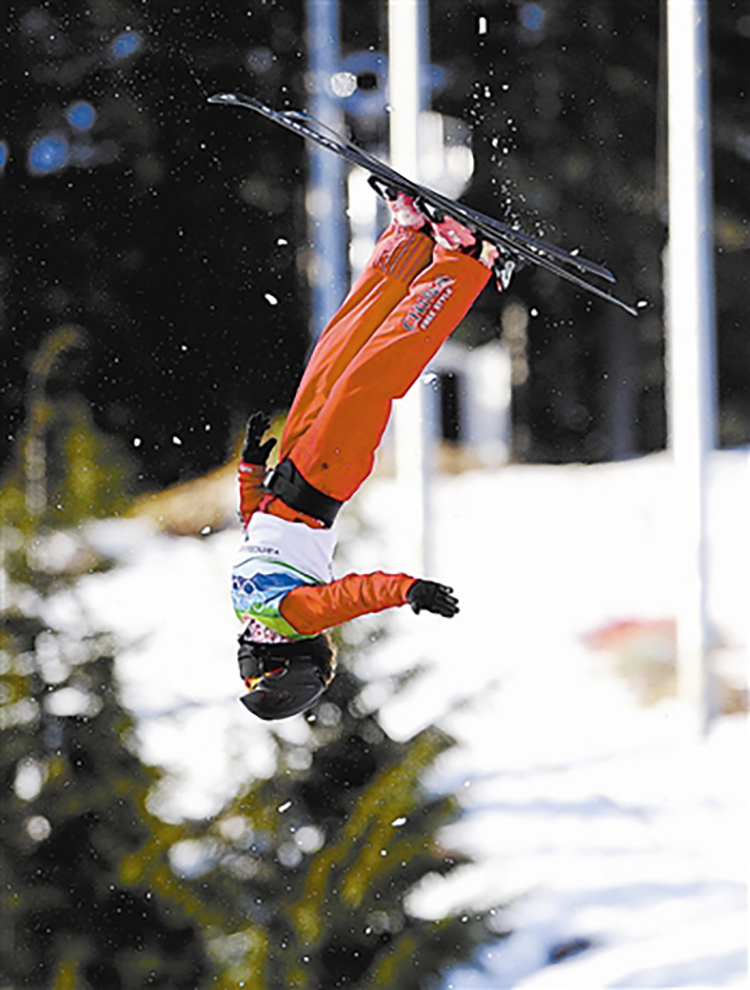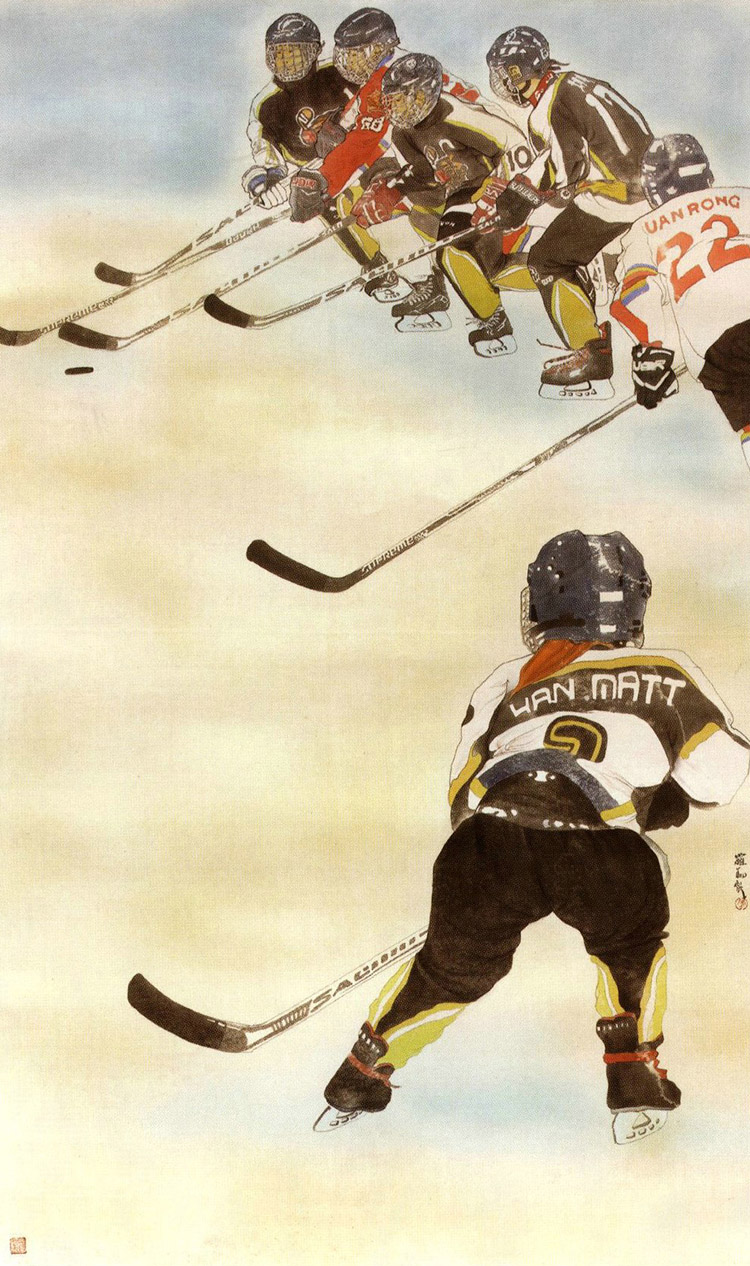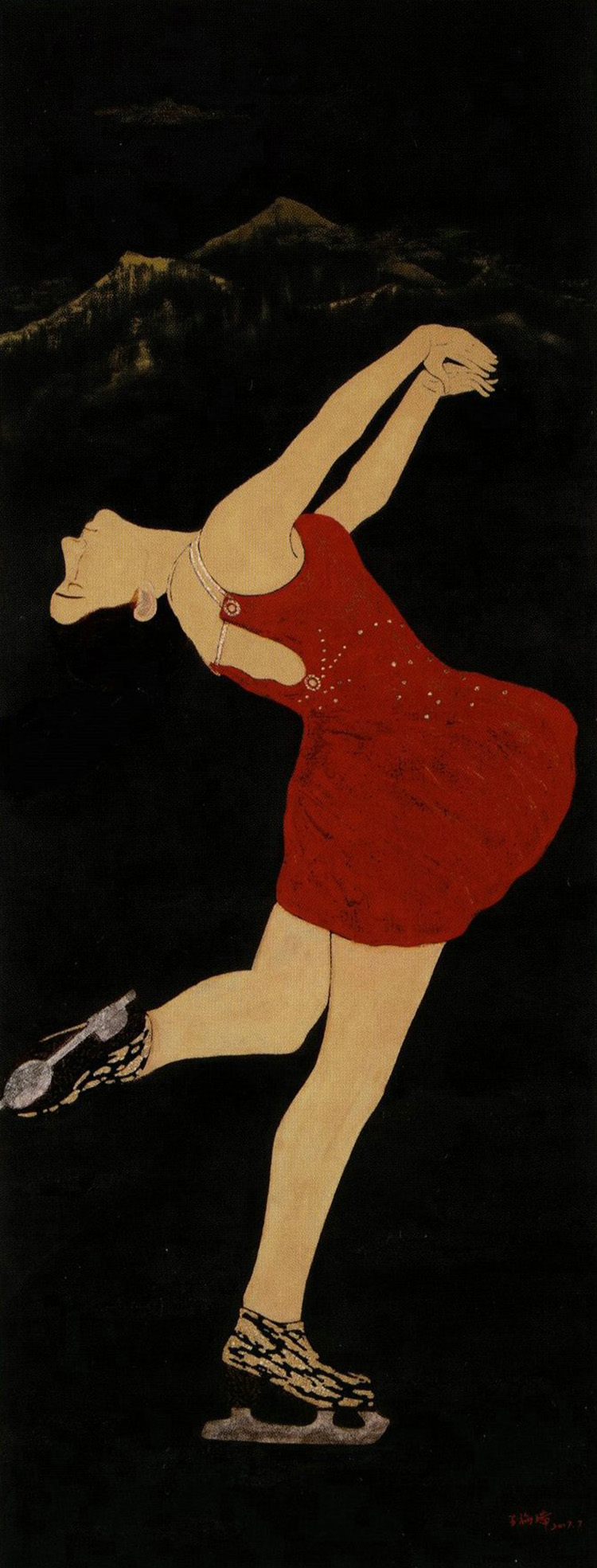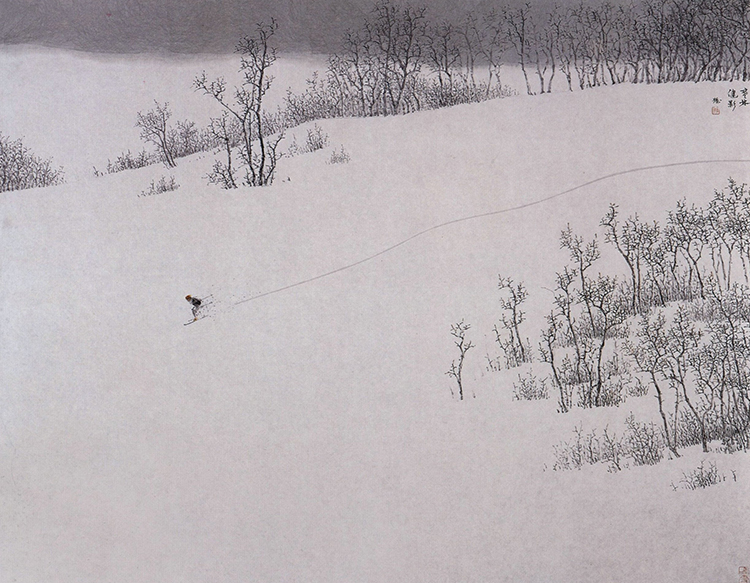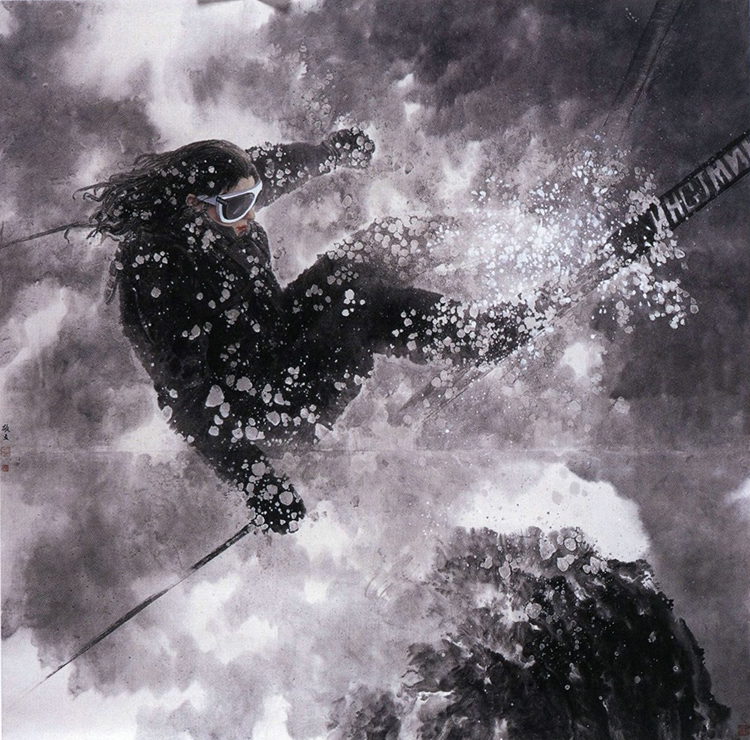Sports are the strong light of life, whereas arts are the bright colors of life. We eulogize life with visual arts. The 9th Beijing Biennale, themed “the Light of Life”, is a continuation of the 3rd session and highlights the dignity, power and glory of life. It focuses on the spirit of the Olympic Games and denotes the battle against the pandemic. Through paintings, sculptures, installations and videos, the 9th session pursues unique, distinctive styles of contemporary art. To facilitate your understanding and reference, we now provide 14 keywords related to the theme.
Claudia Daniela Lazar(Rumania)
The First Game / 2007 / acrylic on canvas / 140cm×120cm
Work from the 3rd Beijing Biennale
Wang Yanda(China) / The Colorful World on Ice
2018 / stainless steel / 100cm × 300cm × 200cm
Work from the 8th Beijing Biennale
Key Word: Winter Olympics (including Sports)
At a conference held in Paris in 1922, the IOC decided to celebrate an International Winter Sports Week through a snow and ice performance before the 8th Summer Olympic Games. As the host of the 8th Olympics, France was designated by the IOC to hold this Sports Week in Chamonix. Celebrated from January 25th to February 4th, 1924, the Sports Week was participated by 258 athletes from 16 countries, including 13 females and 245 males. This was actually a snow and ice sports competition, including skiing, skating, ice hockey and bobsleigh. Two years later, the IOC decided this event to be the first Winter Olympic Games. The second Games was staged in St. Moritz, Switzerland in 1928. From this year on, summer and winter Olympic Games started to be held in cities of different countries.
1924 International Winter Sports Week at Chamonix, France
The First Winter Olympic Games
Poster of the 1924 Winter Olympic Games
Swiss Team of the 1924 Winter Olympic Games
Medals of the First Winter Olympic Games
Skiing of the St. Moritz 1928 Winter Olympic Games
Skeleton Athletes of the 1928 Winter Olympic Games
Lake Placid 1932 Winter Olympic Games
Garmisch-Partenkirchen 1936 Winter Olympic Games
The fifth Winter Olympic Games was held again at St. Moritz, Swiss in 1948. This is Steve Knowlton, American champion of men’s alpone skiing.
The sixth Winter Olympic Games was held in 1952 in Norway, birthplace of modern skiing
Figure Skating of the 1956 Winter Olympic Games
Squaw Valley 1960 Winter Olympic Games
Innsbruck 1964 Winter Olympic Games
Grenoble 1968 Winter Olympic Games
Sapporo 1972 Winter Olympic Games
Innsbruck 1976 Winter Olympic Games
China attended the Winter Olympic Games for the first time in 1980
Chinese athletes across the Taiwan Strait took part in the Winter Olympic Games in 1984
Opening Ceremony of the 1988 Winter Olympic Games
The Chinese team won the first medal at the 1992 Winter Olympic Games
In 1986, the IOC decided to separate Summer and Winter Olympic Games from 1994, which means the two Games were each held at four-year intervals, alternating in even-numbered years. This made the 1992 Winter Olympics the last session that was held in the same year as the Summer Games. The Winter Games does not follow the rule of the Summer Games that counts a session according to leap year; rather, it is counted according to how many sessions have been held. As of 2018, altogether 23 sessions have been held; and the 24th Games will be held in Beijing and Zhangjiakou of China in 2022.
Lillehammer 1994 Winter Olympic Games
Nagano 1998 Winter Olympic Games
Yang Yang, athlete in short track speed skating, was the first Chinese gold medalist at the Winter Olympic Games
Turin 2006 Winter Olympic Games
The Chinese athlete Wang Meng won three gold medals at the 21st Winter Olympic Games
Zhang Hong, athlete in speed skating, won a gold medal at the 22nd Winter Olympic Games, which was the first one at this sports in 34 years
China took part in the most sports at the 23rd Winter Olympic Games
The President of the International Olympic Committee (IOC) Thomas Bach announced that Beijing would be the host city of the 2022 Winter Olympic Games
The Beijing-Zhangjiakou 2022 Winter Olympic Games Bid Logo
Emblem Release of the 2022 Winter Olympics and Paralympics
The Water Cube turns into the Ice Cube
National Speed Skating Oval (also dubbed as the Ice Ribbon)
Countdown Digital Board of the Beijing 2022 Winter Olympic Games on the Linglong Tower
Bing Dwen Dwen, Mascot of the 2022 Winter Olympics
Shuey Rhon Rhon, Mascot of the 2022 Winter Paralympics
The number of sports in the Winter Olympic Games has increased from four to nearly twenty, including alpine skiing, biathlon, bobsleigh, cross-country skiing, curling, figure skating, freestyle skiing, ice hockey, luge, Nordic combined, short track speed skating, skeleton, ski jumping, snowboard and speed skating.
Short Track Speed Skating, Representative Event of the Winter Olympics
Amazing Figure Skating in the Winter Olympics Event
Curling
Skeleton
Ice Hockey
Super Giant Slalom
Skelton
Alpine Skiing
Figure Skating
Snowboarding
Skating
Ski Jumping
Luge
Sleidge
Bobsleigh
Freestyle Skiing
The Winter Olympic Games can better demonstrate the Olympic spirit of Faster, Higher and Stronger. Given the cold weather and features of winter sports, the Winter Olympics is more challenging, thus encouraging human beings to constantly strive for breakthroughs.
Ice Hockey/ Luo Xiang/ Chinese Painting/ 207cm × 125cm
Dream Chaser/ Wang Hairui/ Lacquer Painting/ 154cm × 300cm
Skating/ Cui Qiang/ Chinese Painting/ 110cm × 139cm
Skiing in Snow/ Chen Jingyou/ Chinese Painting
The 14 key words will be published one by one. Look forward to your interest and participation in the Beijing Biennale.
(Notes: Please strictly follow copyright laws and relevant regulations in and outside China when referring to captions, photos and other information in your creation. Plagiarism is unacceptable. Copyright-related legal issues should be taken care of by artists themselves.)
